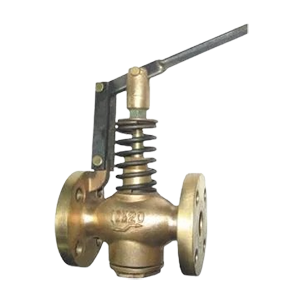In marine and industrial systems, safety and efficiency depend on how quickly a valve can respond in an emergency. Two types of valves often confused with each other are the quick closing valve and the self-closing valve. While their names sound similar, their structures, operating principles, and applications differ. Understanding the difference helps ensure the right valve is used in the right system.
What Is a Quick Closing Valve
A quick closing valve is designed to shut off the flow of liquid or gas immediately in case of an emergency. It’s commonly found in marine fuel oil pipelines, lubrication systems, and engine rooms where a fast response is essential to prevent fire or leakage.
The valve is operated by a remote control mechanism—usually a wire or lever connected to a handle outside the engine room. When pulled, it releases the valve, allowing it to close quickly by spring force. This feature allows crew members to isolate the fuel system instantly without entering a hazardous area.
Key Features of Quick Closing Valves
-
①Operated remotely for safety during fire or leak situations.
-
②Closes instantly to cut off fluid supply.
-
③Typically spring-loaded or pneumatically assisted.
-
④Commonly made of bronze or stainless steel for marine use.
-
⑤Installed on fuel oil service tanks, diesel tanks, and hydraulic oil lines.
Quick closing valves are a critical part of marine safety systems. In emergencies, they help prevent fire spread and reduce damage, protecting both crew and equipment.
What Is a Self-Closing Valve
A self-closing valve, on the other hand, automatically closes after operation without requiring external force or remote control. It’s designed for systems that need to stop fluid flow automatically after filling or draining is complete.
The most common type is a spring-return valve, where the handle must be held open manually. Once released, the spring mechanism forces the valve to close. These valves are often found in fuel filling points, drain lines, and water outlets on ships and industrial equipment.
Key Features of Self-Closing Valves
-
①Closes automatically when the handle is released.
-
②Prevents accidental overfilling or continuous discharge.
-
③Simple structure, easy to operate and maintain.
-
④Ideal for bunker stations, fuel transfer lines, and deck drain systems.
While not intended for emergency shutdowns, self-closing valves enhance operational safety and reduce the risk of spills during normal operations.
Post time: Oct-23-2025

